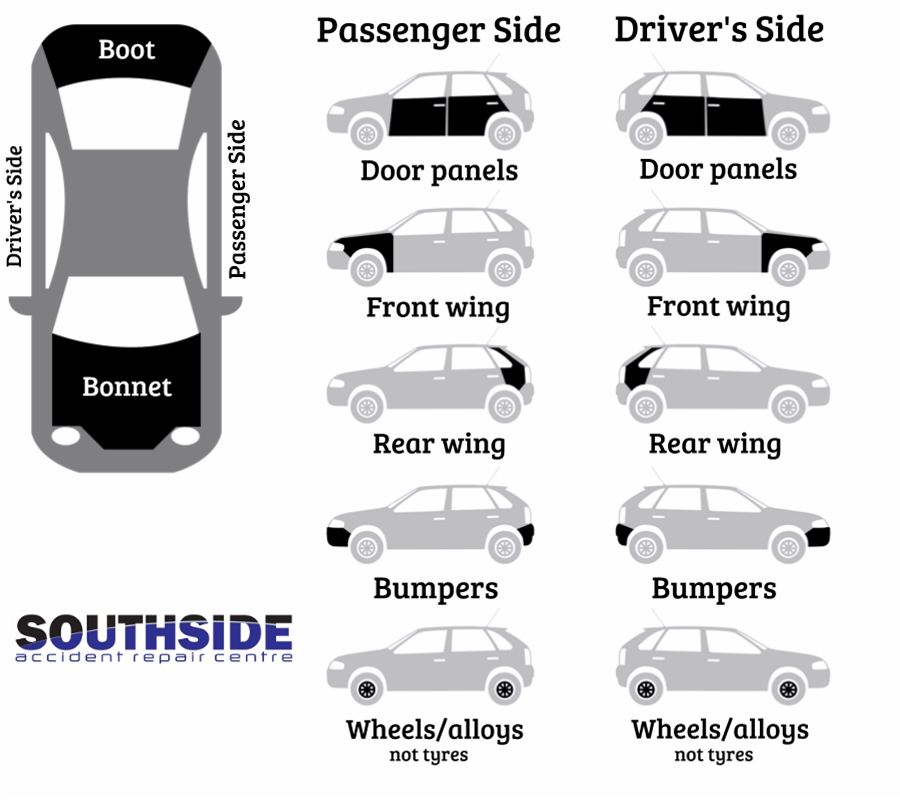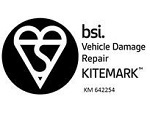The South East’s Premier Bodyshop and Repairs Specialists
Given the amount of money we spend on payments, maintenance, and repairs for our cars, you would think we would have a better understanding of our vehicles. Yet, despite how much we invest, many of us remain unclear about what really makes them tick. At Southside ARC, we want to help you get to know your car, the first step toward safer driving, lower repair bills and greater confidence behind the wheel.
Whether you’re curious about the engine, the dashboard warning lights or the basic maintenance every driver should know, our team is here to help. We want to demystify the mechanics and give you the knowledge to identify potential issues early, avoid costly mistakes and make informed decisions about your vehicle’s care.
Bodywork
- Deal promptly with damage to bodywork to prevent rust setting in.
Tyres
- Know the correct tyre pressures for your car and check them at least every two weeks using a good-quality gauge or garage air line.
- Check tyre tread and condition – look for cuts on sidewalls. If any one tyre needs regular top-ups, it may have a slow puncture.
- Don’t forget to check the spare as well.
Toolkit
- Check the handbook for the location of the basic toolkit for the car that should contain at least a jack and wheel removal tools.
- Familiarise yourself with the jacking points used to lift the car safely.
- If locking wheel nuts are fitted make sure that the toolkit includes the key or removal tool.
Engine Oil
- Check the dipstick at least every fortnight and before any long journey.
- Have the oil and filter changed at recommended service intervals using oil of the correct specification.
- High oil consumption can indicate engine problems.
Water
- Check the coolant level regularly and top up as necessary – but only when the engine is cold.
- Have the antifreeze concentration checked before winter.
- Antifreeze prevents the build-up of corrosion within the cooling system as well as stopping the coolant freezing so is important all year round.
Screenwash
- Check and top up regularly – it’s a legal requirement that the system works.
- Use a good screenwash additive through summer and winter – water alone won’t clear oily road grime and freezes more readily in winter.
Windscreen
- Check regularly for stone damage as this can impair vision or distract attention.
- Minor chips can grow and crack the glass but many can be repaired by a windscreen specialist.
Lights
- Check all lights weekly. Don’t forget indicators, brake and fog lights.
- Clean lights regularly. In bad weather wipe them over with a damp cloth during driving breaks.
Power steering
- Ensure that the fluid reservoir is checked at every service, and check it yourself once a month.
- Top up only using the correct hydraulic fluid as advised in the car handbook.

Finally, we appreciate you taking the time to explore our website. As a leading and award-winning accident repair company in London, we take pride in delivering top-quality services. For more information or to discuss your repair needs, feel free to contact us. Our team is always happy to assist you. Don’t forget to follow us on social media for the latest updates, news, and exclusive offers!

Get to know your car








